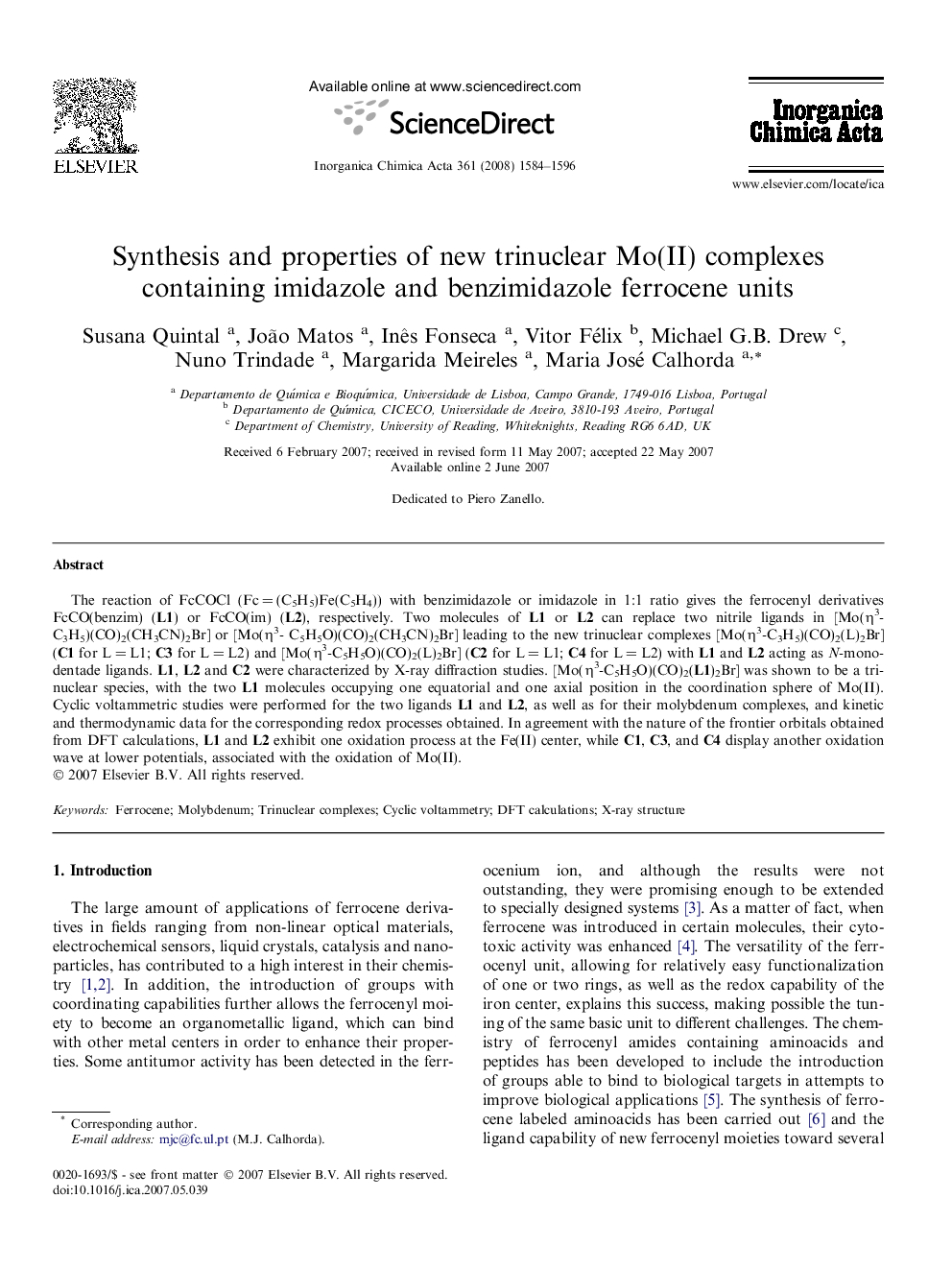| Article ID | Journal | Published Year | Pages | File Type |
|---|---|---|---|---|
| 1309143 | Inorganica Chimica Acta | 2008 | 13 Pages |
The reaction of FcCOCl (Fc = (C5H5)Fe(C5H4)) with benzimidazole or imidazole in 1:1 ratio gives the ferrocenyl derivatives FcCO(benzim) (L1) or FcCO(im) (L2), respectively. Two molecules of L1 or L2 can replace two nitrile ligands in [Mo(η3-C3H5)(CO)2(CH3CN)2Br] or [Mo(η3- C5H5O)(CO)2(CH3CN)2Br] leading to the new trinuclear complexes [Mo(η3-C3H5)(CO)2(L)2Br] (C1 for L = L1; C3 for L = L2) and [Mo(η3-C5H5O)(CO)2(L)2Br] (C2 for L = L1; C4 for L = L2) with L1 and L2 acting as N-monodentade ligands. L1, L2 and C2 were characterized by X-ray diffraction studies. [Mo(η3-C5H5O)(CO)2(L1)2Br] was shown to be a trinuclear species, with the two L1 molecules occupying one equatorial and one axial position in the coordination sphere of Mo(II). Cyclic voltammetric studies were performed for the two ligands L1 and L2, as well as for their molybdenum complexes, and kinetic and thermodynamic data for the corresponding redox processes obtained. In agreement with the nature of the frontier orbitals obtained from DFT calculations, L1 and L2 exhibit one oxidation process at the Fe(II) center, while C1, C3, and C4 display another oxidation wave at lower potentials, associated with the oxidation of Mo(II).
Graphical abstractFerrocenoyl imidazole and benzimidazole complexes bind to Mo(II) affording trinuclear species. The HOMO changes nature: from Fe d in the ligand, it becomes Mo centered; the oxidation patterns also change accordingly.Figure optionsDownload full-size imageDownload as PowerPoint slide
